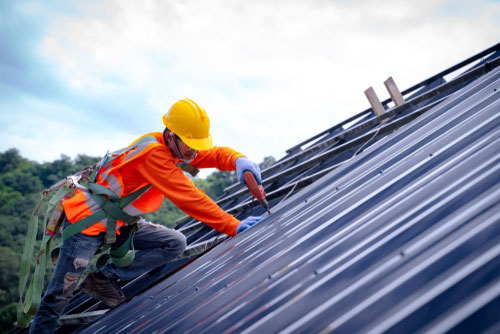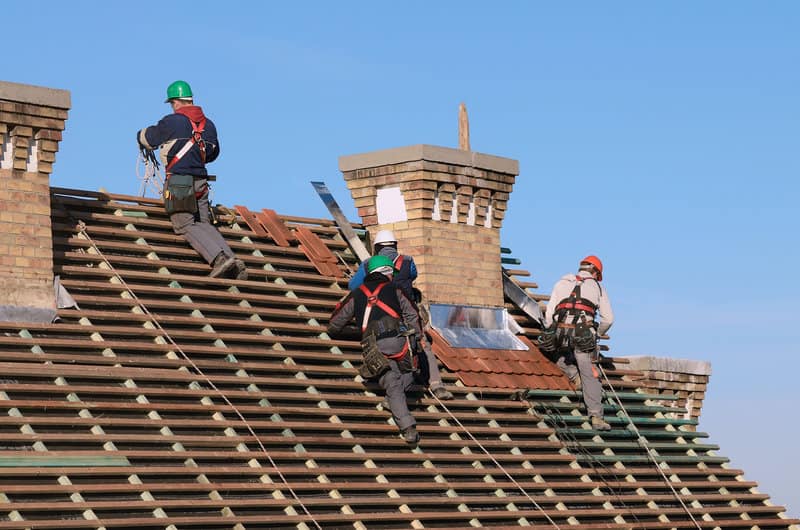Work with an experienced Toledo Roofer for commercial roofing projects.
Work with an experienced Toledo Roofer for commercial roofing projects.
Blog Article
Exactly How to Evaluate Different Roof Covering Alternatives for Your Building Needs
Evaluating roofing alternatives for your building calls for a thorough approach that takes into consideration numerous factors such as the meant use the framework, local environment conditions, and material attributes. It is vital to weigh the advantages and disadvantages of various roof covering kinds, from asphalt shingles to steel and clay ceramic tiles, while likewise considering preliminary expenses and long-term maintenance. Furthermore, comprehending power efficiency and aesthetic charm can influence your choice. As you consider these factors to consider, one inquiry remains: which aspects will ultimately direct your option for a lasting and aesthetically pleasing roof service?
Assessing Your Building's Demands
To properly examine roof covering choices, start by completely examining your structure's needs. Begin by considering the structure's intended usage, as various frameworks might require differing roofing specs. Domestic roof coverings frequently focus on aesthetics and insulation, while commercial buildings might concentrate on resilience and load-bearing ability.
Next, review the local climate conditions that will certainly influence roofing performance. Aspects such as temperature changes, precipitation levels, and wind patterns can affect product choice and layout. A roof system that masters a warm climate might not carry out as well in locations vulnerable to hefty snowfall or extreme warm.
In addition, assess the structural integrity of your building. Make sure that the existing framework can support the picked roof products, especially if thinking about heavier options. It is likewise crucial to evaluate any type of local building ordinance or policies that may dictate details demands for roof covering systems.

Contrasting Roof Products
When a comprehensive assessment of your structure's demands has been completed, the next step entails comparing different roofing materials. Each product offers distinct benefits and negative aspects, making it necessary to align your option with your particular needs and conditions.
Asphalt shingles are extensively identified for their price and convenience of installment, making them a prominent choice for domestic buildings. On the other hand, steel roof, known for its sturdiness and durability, can withstand harsh climate conditions but might come with a greater preliminary investment.
Clay and concrete ceramic tiles supply superb thermal insulation and aesthetic appeal, specifically for Mediterranean-style design, yet they need a more robust architectural support because of their weight. Timber trembles deal an all-natural look and excellent insulation homes yet might require a lot more upkeep and are susceptible to fire threats.
Examining Cost and Budget Plan
Examining your roofing alternatives requires a cautious assessment of price and budget plan considerations. The total allocate a roof covering project consists of several aspects, including material prices, labor costs, upkeep, and potential long-term financial savings. It is vital to develop a clear budget before discovering details roofing materials, as this will certainly direct the decision-making procedure and help you avoid overspending.
Begin by acquiring quotes from numerous specialists to understand labor costs in your region. Ensure that these quotes consist of all essential solutions, such as removal of the old roof covering, installation, and any extra functions, like insulation or ventilation improvements - Roofing Contractor. Next, analyze the cost of various roof materials, taking right into account both initial setup prices and expected lifespan

Recognizing Power Efficiency
Energy efficiency plays a crucial function in the choice of roofing products and systems, considerably impacting both power intake and overall comfort within a structure. An appropriate roof covering can enhance thermal efficiency, reducing the requirement for home heating and cooling systems, which in turn decreases energy bills and minimizes ecological impact.
When examining roof choices, consider products that reflect as opposed to absorb heat. Light-colored or reflective roof items can considerably reduce roof covering surface area temperatures, resulting in lower energy usage throughout hot months. Additionally, correct insulation and air flow are necessary to optimize the energy efficiency of the whole roof. Insulation prevents heat transfer, while Continued air flow reduces warm accumulation in the attic space.
One more crucial element is the roof's longevity and upkeep demands. Durable products that need less frequent substitute add to long-lasting power savings. The energy performance of a roof covering system can also be evaluated through its conformity with recognized sustainability rankings such as ENERGY STAR or like this LEED.
Taking Into Consideration Visual Charm
A roofing system's visual appeal significantly affects the general look of a building, complementing its architectural design and enhancing curb charm. Sylvania Roofing Contractor. When examining roof covering choices, it is important to take into consideration how the selected product, shade, and layout will certainly integrate with the existing framework and community. A properly designed roofing can boost also the easiest of buildings, transforming them into aesthetic focal factors
Different roofing products provide numerous visual high qualities. For instance, standard roof shingles might evoke a timeless appeal, while metal roof covering can give a modern, streamlined appearance. In addition, the shade of the roofing material plays an important duty; lighter tones can make a structure show up more spacious, while darker tones might produce a cozier ambiance.
Moreover, architectural elements, such as dormers and eaves, can improve the roofing system's aesthetic impact. It is suggested to talk to professional designers or designers to ensure the selected roofing option aligns with the general design intent. Ultimately, a roof needs to not just offer functional advantages however additionally add positively to the structure's visual, showing the proprietor's preference and the personality of the surrounding environment.
Final thought

Report this page